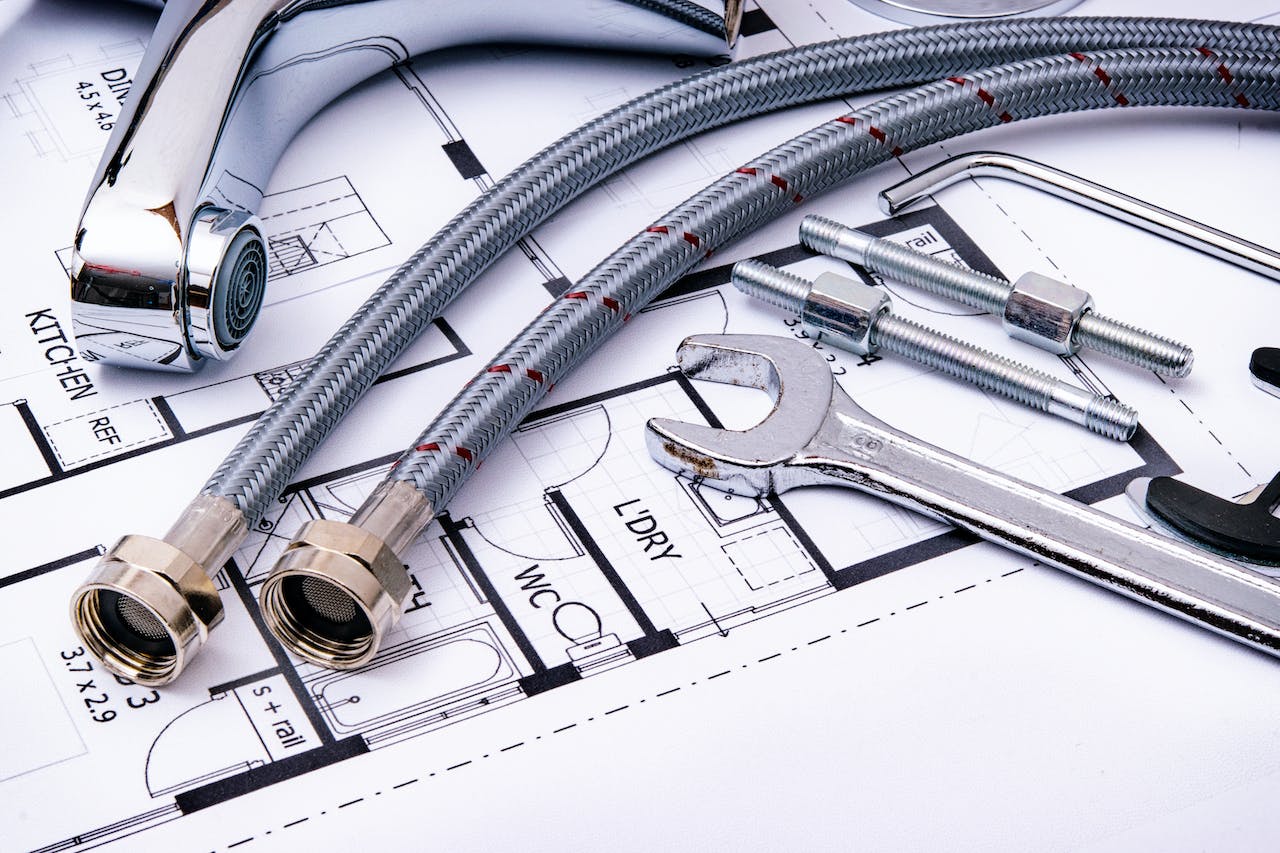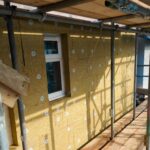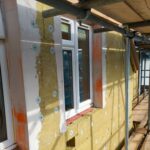In Retrofit by Robert Wheeler / 17 April 2024 / 0 comments

Retrofitting is a critical process that involves upgrading and improving existing buildings and infrastructure to meet modern standards, enhance energy efficiency, and ensure structural integrity. As the world continues to focus on sustainability and reducing environmental impact, retrofitting plays a vital role in transforming older structures into more sustainable and resilient assets.
This blog post provides a comprehensive overview of how retrofitting works, outlining the process, principles, and benefits associated with retrofit projects. By understanding the fundamentals of retrofitting, building owners, architects, and engineers can make informed decisions to optimize the performance and lifespan of existing structures.
Introduction to Retrofitting
Definition and Purpose of Retrofitting
Retrofitting isn’t just a fancy word for giving your building a makeover. It’s about making improvements to existing structures to enhance their performance, functionality, and energy efficiency. Think of it as a facelift for your home or office, but with a purpose beyond just looking good.
The purpose of retrofitting is to address issues that may have been overlooked during the initial construction or to keep up with changing needs and regulations. It’s like hitting the refresh button on your building to ensure it’s up to par with modern standards and can withstand the test of time.
Importance of Retrofitting in Building and Infrastructure
Retrofitting plays a crucial role in ensuring the longevity and sustainability of buildings and infrastructure. As technology advances and environmental concerns grow, retrofitting becomes more important than ever.
By upgrading your building through retrofitting, you can improve energy efficiency, reduce carbon emissions, increase safety, and enhance functionality. It’s like giving your old building a new lease on life, without the hassle of starting from scratch. Plus, retrofitting can often be more cost-effective than tearing down and rebuilding, making it a win-win situation for both your wallet and the environment.
Understanding Retrofitting Process and Principles
Overview of Retrofitting Approaches
When it comes to retrofitting, there isn’t a one-size-fits-all approach. The process can vary depending on the specific needs and goals of your building. Generally, retrofitting can involve anything from upgrading insulation and lighting systems to strengthening structural elements and improving water efficiency. It’s all about identifying what areas need improvement and finding the right solutions to address those issues.
Key Principles of Retrofitting
While the approaches may vary, there are some key principles that guide the retrofitting process. These principles include maximizing energy efficiency, improving sustainability, enhancing safety and resilience, and preserving the architectural integrity of the building. It’s about finding a balance between modernizing your structure and maintaining its unique character and charm.
Assessing the Need for Retrofitting
Identifying Structural and Functional Issues
Before diving into the retrofitting process, it’s important to assess the need for it. This involves identifying any structural or functional issues that may be present in your building. It could be cracks in the walls, outdated electrical systems, or inadequate insulation. Evaluating the existing condition of your building will help determine which areas require attention and prioritize the retrofitting efforts.
Evaluating Energy Efficiency and Sustainability
Energy efficiency and sustainability are key factors in retrofitting projects. It’s essential to evaluate how your building is performing in terms of energy consumption and environmental impact. Is your building sucking up energy like a thirsty vampire? Are you wasting resources and contributing to climate change? By assessing your building’s energy efficiency and sustainability, you can identify areas for improvement and make the necessary changes to reduce your carbon footprint.
Key Steps in Retrofitting Design and Planning
Building Assessment and Site Analysis
Once you’ve recognized the need for retrofitting, it’s time to roll up your sleeves and get to work. The first step is conducting a thorough assessment of your building and analyzing the site. This involves examining the existing conditions, understanding the building’s history, and considering any local regulations or restrictions. It’s like playing detective, gathering all the clues you need to develop a retrofitting plan that aligns with your goals and budget.
Defining Retrofitting Goals and Objectives
In any retrofitting project, it’s crucial to define clear goals and objectives. What do you want to achieve through retrofitting? Is it to improve energy efficiency, enhance safety, or increase functionality? By setting specific goals, you can stay focused and ensure that your retrofitting efforts are aligned with your desired outcomes. It’s like having a roadmap that guides you towards success.
Budgeting and Resource Allocation
Ah, the dreaded B-word: budget. Retrofitting projects, like any construction endeavor, require careful financial planning. It’s important to assess how much you’re willing to invest in retrofitting and allocate resources accordingly. This means weighing the costs and benefits of different retrofitting options and making informed decisions that fit within your budget. So, grab your calculator and get ready to crunch some numbers. It’s time to turn those retrofitting dreams into a reality!
Implementing Retrofit Measures and Techniques
Energy Efficiency Improvements
When it comes to retrofitting, one of the most important goals is to improve energy efficiency. This can be achieved through various measures such as upgrading insulation, replacing outdated HVAC systems with energy-efficient models, and installing energy-efficient lighting fixtures. These improvements not only reduce energy consumption but also lead to significant cost savings in the long run.
Structural Reinforcements and Upgrades
Retrofitting also involves strengthening the structural components of a building to ensure safety and longevity. This may include reinforcing walls, floors, and foundations, as well as upgrading windows and doors to enhance durability and resistance to external factors. By addressing structural weaknesses, retrofit projects can improve the overall integrity and stability of the building.
Integration of Sustainable Systems
To further enhance the environmental performance of a building, retrofit projects often focus on integrating sustainable systems. This can involve the installation of renewable energy sources, such as solar panels or geothermal systems, to reduce reliance on conventional energy sources. Additionally, rainwater harvesting systems and green roofs can be incorporated to promote water conservation and improve the building’s overall sustainability.
Common Challenges and Solutions in Retrofitting
Pre-existing Building Constraints
Retrofitting older buildings often presents unique challenges due to pre-existing constraints. These can include limited space for equipment installation, outdated construction techniques, and building code compliance issues. However, by employing innovative design strategies and working closely with experienced professionals, these constraints can be overcome to ensure a successful retrofit project.
Financial and Funding Challenges
One major hurdle in retrofitting is securing adequate funding for the project. Retrofitting can be costly, especially for large-scale projects. However, there are various financial incentives, grants, and loan programs available to support retrofit initiatives. Engaging in thorough cost-benefit analysis and exploring different funding options can help overcome financial challenges and make retrofitting more financially feasible.
Regulatory and Permitting Issues
Navigating through regulatory and permitting processes can be a complex task when it comes to retrofitting. Building codes and regulations vary from location to location, and retrofit projects may require additional permits and approvals. It is vital to work closely with local authorities and ensure compliance with all relevant regulations to avoid delays and complications during the retrofit process.
Benefits and Advantages of Retrofitting
Enhanced Energy Efficiency and Cost Savings
One of the primary benefits of retrofitting is the enhancement of energy efficiency, leading to significant cost savings over time. By implementing energy-efficient technologies and measures, building owners can reduce energy consumption and lower utility bills, making it a win-win situation for both the environment and their wallets.
Improved Comfort and Indoor Environmental Quality
Retrofitting also improves the comfort and indoor environmental quality of buildings. Upgrading insulation and HVAC systems can create a more comfortable living or working environment, while proper ventilation and air filtration systems can enhance air quality and occupant health.
Environmental Sustainability and Reduced Carbon Footprint
Retrofitting plays a crucial role in promoting environmental sustainability by reducing the carbon footprint of buildings. By implementing energy-efficient technologies and integrating sustainable systems, retrofit projects contribute to reducing greenhouse gas emissions and mitigating climate change.
Case Studies of Successful Retrofit Projects
Retrofitting a Commercial Office Building
In this case study, a commercial office building underwent a comprehensive retrofit that included energy-efficient lighting, smart HVAC controls, and insulation upgrades. As a result, the building’s energy consumption decreased by 30%, leading to substantial cost savings and improved occupant comfort.
Retrofits in Residential Buildings
This case study focuses on retrofitting residential buildings with solar panels and energy-efficient appliances. By utilizing renewable energy and reducing energy waste, homeowners experienced significant reductions in their electricity bills while contributing to a greener future.
Retrofitting Historic Structures
Retrofitting historic structures can present unique challenges due to preservation requirements. This case study examines the successful retrofit of a historic building by integrating modern energy-efficient technologies while preserving its architectural integrity. By striking a balance between preservation and sustainability, the project achieved both aesthetic and environmental goals.
Conclusion
In conclusion, retrofitting offers immense potential for improving the functionality, energy efficiency, and sustainability of existing buildings and infrastructure. By assessing the need for retrofitting, carefully planning the design and implementation process, and overcoming common challenges, it is possible to achieve remarkable results. The benefits of retrofitting extend beyond cost savings and environmental impact, as they also contribute to enhanced comfort, improved indoor environmental quality, and the preservation of valuable historic structures. With continued innovation and commitment to retrofitting, we can transform our built environment into a more sustainable and resilient one for future generations.
How Retrofit Works FAQs
Retrofitting focuses on upgrading and improving existing structures to meet specific goals such as energy efficiency or structural integrity. Remodelling, on the other hand, involves making significant changes to the layout, design, or function of a building. While remodelling often involves cosmetic changes, retrofitting primarily deals with enhancing functionality and sustainability.
The duration of a retrofit project can vary depending on the scope and complexity of the improvements being made. Small-scale retrofit projects may take a few weeks or months, while larger and more extensive projects can take several months or even years to complete.
Yes, retrofitting can be done on historic buildings while still preserving their architectural and historical significance. Careful planning, consultation with preservation experts, and adherence to appropriate guidelines and regulations are crucial to ensure that the retrofitting process respects the integrity and authenticity of the structure.
There are several financing options available for retrofitting projects. These can include government incentive programs, grants, loans, energy performance contracts, and partnerships with energy service companies. It is essential to explore these options and determine which ones align with the specific needs and goals of the retrofit project.
Ready to discuss your regeneration project and how NXTGEN Futures Ltd can elevate it with expert retrofit? Contact us today!
Latest Retrofit Posts
- What a retrofit-first approach offers the UKRetrofitting is like giving your home a makeover to make it more energy-efficient, comfortable, and healthy. The retrofit-first approach prioritizes upgrading existing buildings over new construction to tackle climate change and improve living conditions. Definition of Retrofitting Retrofitting involves making… Read more: What a retrofit-first approach offers the UK
- What is internal wall insulation?Internal wall insulation is a crucial component of creating a comfortable and energy-efficient living space. By insulating the walls within a building, homeowners can experience benefits such as improved thermal performance, reduced energy bills, and enhanced acoustic comfort. Understanding the… Read more: What is internal wall insulation?
- What is a retrofit assessor?Retrofit assessors play a crucial role in the sustainability and energy efficiency of buildings by evaluating and identifying opportunities for improvement. This blog post aims to provide an in-depth understanding of the responsibilities, qualifications, and benefits associated with being a… Read more: What is a retrofit assessor?
- What is a retrofit assessment in the UK?Retrofit assessments play a crucial role in the sustainable development of buildings in the UK, helping to improve energy efficiency, reduce carbon emissions, and enhance overall building performance. By evaluating existing structures and identifying opportunities for upgrades and enhancements, retrofit… Read more: What is a retrofit assessment in the UK?
- Retrofit and Energy Efficiency in Historic BuildingsHistoric buildings are not only architectural treasures but also valuable cultural assets that contribute to our sense of history and identity. However, many of these buildings often suffer from poor energy efficiency, leading to excessive energy consumption and high operating… Read more: Retrofit and Energy Efficiency in Historic Buildings
- What is retrofitting in construction?Retrofitting in construction is a crucial process that involves upgrading existing buildings or structures to meet modern standards of safety, energy efficiency, and functionality. This blog post explores the concept of retrofitting, its importance, various techniques used in the industry,… Read more: What is retrofitting in construction?
- CASE STUDY: Curtis WayDelivering a Holistic Retrofit Solution with EWI & Solar Energy Project Overview NXTGEN Futures Ltd. successfully completed a large-scale retrofit project on Curtis Way, Berkhamsted, England, UK. This case study showcases our expertise in External Wall Insulation (EWI), retrofit coordination,… Read more: CASE STUDY: Curtis Way
- What happens to a building during retrofitting?Building retrofitting is a vital process that involves making significant modifications and improvements to existing structures to enhance their efficiency, functionality, and sustainability. In this blog post, we will delve into the intricate workings of building retrofitting, exploring the various… Read more: What happens to a building during retrofitting?
- UK Government Retrofit Scheme: Making Energy Efficiency Cool AgainIntroduction to the UK Government Retrofit Scheme Background of the Retrofit Scheme Picture this: you’re sitting at home, snuggled up in your favourite blanket, enjoying a cup of tea, when suddenly you feel a draft. Not cool, right? Well, that’s… Read more: UK Government Retrofit Scheme: Making Energy Efficiency Cool Again
- What are Retrofit Trickle Vents?Improving indoor air quality and enhancing energy efficiency are key priorities for many homeowners. In this article, we will explore the concept of retrofit trickle vents and their role in achieving these goals. Trickle vents are small, adjustable openings integrated… Read more: What are Retrofit Trickle Vents?
- Retrofit Underfloor HeatingRetrofit underfloor heating has gained significant popularity as a cost-effective and efficient solution for enhancing the comfort and energy efficiency of existing buildings. Unlike traditional radiator systems, underfloor heating distributes warmth evenly across the floor, providing a comfortable and cozy… Read more: Retrofit Underfloor Heating
- Retrofit LondonRetrofitting has emerged as a crucial solution in transforming the landscape of cities, and London is no exception. As a global hub of culture, commerce, and innovation, London faces the pressing challenge of reducing its carbon footprint while ensuring sustainable… Read more: Retrofit London












